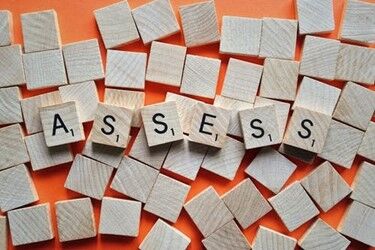Marriage
Measuring Progress in Marriage and Family Therapy
Assessments can be used to determine a baseline, growth, and overall change.
Posted October 10, 2022 Reviewed by Michelle Quirk
Key points
- Assessments provide an objective way to measure behavior.
- Assessments can be used in therapy to gather information, direct the course of treatment, and to promote positive change in clients.
- To capture the complex family system, assessments that examine relationships both within and outside of the partnership must be used.

An assessment provides an objective way to measure behavior (Anastasi & Urbina, 1997, as cited in Whiston, 2017). Assessments also enable a person to be systematic and objective when inferring a behavior based on a construct (e.g., satisfaction, happiness).
Four Stages of Assessments in Counseling
In relation to counseling, assessments enable the practitioner to establish a baseline and monitor the process of therapy. In some cases, assessments can be used as a screener by which to begin the process of diagnosing an individual. Whiston (2017) notes that assessments should be considered holistically when it comes to the counseling process and conceptualized this in a four-stage process.
In the first stage, the mental health practitioner will begin by assessing the presenting issue(s) of the clients(s). This will enable the clinician to determine the best course of action with regard to treatment. After this, during the second stage, the clinician will continue to use these assessments to make sure that they adequately understand the client’s problem(s). It is imperative that a clinician not underestimate the severity of the presenting issue, lest an ineffective approach be taken. In the third stage, the practitioners review previous approaches and assess their utility. They also use formative assessments to continue to monitor the progress of the client (Whiston, 2017). Finally, in the fourth stage, the counselor will examine whether or not the treatment was effective.
Whiston (2017) notes that assessment can be conceptualized in two different ways, using the information-gathering model, or the therapeutic assessment model. In the former conceptualization, these measures are for gathering information that can be used to direct the course of treatment. In the latter, the goal of assessment is to promote positive change in clients. Using either lens, the purpose is to determine where a client currently is, so that a course of action can be implemented. In addition, beyond informing the treatment planning and process, assessment of a couple or family members can enhance their engagement with the therapeutic process, making it less likely that they will discontinue treatment (Carlson, Krumholz, & Snyder, 2013).
Assessment in Marriage and Family Therapy
Lavee and Avisar (2006) note that there has been a recent growth in the development of assessment for use in marriage and family therapy, and importance has been placed on developing/using both valid and reliable assessments. Specifically, the use of assessment in couples therapy “…provides information about the couple’s problems and strengths, enables an evaluation of the individual, interpersonal, and environmental factors that may exacerbate problems or hinder the couple’s recuperation, and helps to identify internal and external forces that may affect intervention outcomes" (Floyd, Haynes, & Kelly, 1997, as cited in Lavee & Avisar, 2006, p. 234).
Despite the plethora of assessments available, Lavee and Avisar (2006) found in their study of 163 Israeli family therapists that the majority of clinicians did not use standardized assessments, and instead relied on clinical interviews. Additionally, the researchers found that those who were psychodynamically trained were least likely to use assessments, and those who incorporated cognitive-behavioral therapy were most likely to use standardized tools (Lavee & Avisar, 2006).
A more recent study by Huff, Anderson, and Edwards (2014) contradicted the aforementioned findings. Their study with 91 students in COAMFTE-accredited programs demonstrated that the majority of their sample reported that they used formal assessments. In addition, they used systemic assessments more than tests that focus on the individual.
Assessments of relationships are also inherently more complex, as they go beyond the individual embedded in a relationship, and focus on the unique patterns within a relationship, as well as the influence society has on the couple and its respective members. Therefore, to fully capture the complex family system, assessments that examine relationships both within and outside of the partnership must be used.
References
Carlson, C. I., Krumholz, L. S., & Snyder, D. K. (2013). Assessment in marriage and family counseling. In K.F. Geisinger, B.A. Bracken, J.F Carlson, J. I. C. Hansen, N.R. Kuncel, S. P. Reise, & M. C. Rodriguez (Eds.), APA handbook of testing and assessment in psychology, Vol. 2: Testing and assessment in clinical and counseling psychology. (pp. 569-586). Washington DC: American Psychological Association.
Huff, S. C., Anderson, S. R., & Edwards, L. L. (2014). Training marriage and family therapists in formal assessment: Contributions to students’ familiarity, attitude, and confidence. Journal of Family Psychotherapy, 25(4), 300-315.
Lavee, Y., & Avisar, Y. (2006). Use of standardized assessment instruments in couple therapy: The role of attitudes and professional factors. Journal of Marital and Family Therapy, 32(2), 233-244.
Whiston, S. C. (2017). Principles and applications of assessment in counseling (5th ed.). Boston, MA: Cengage Learning.


